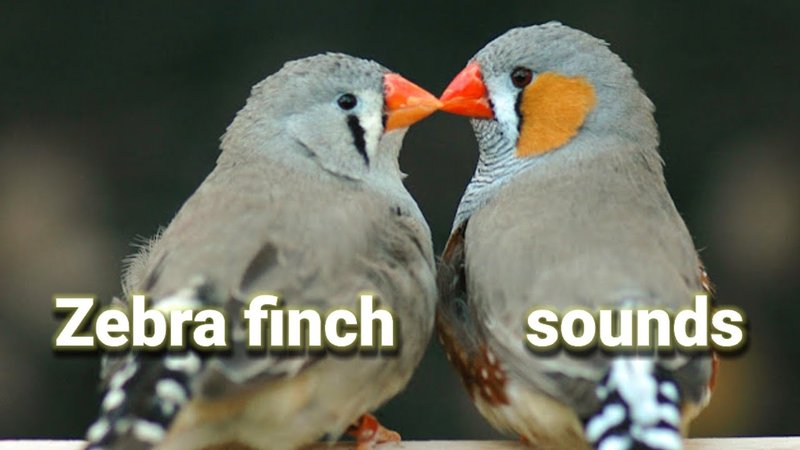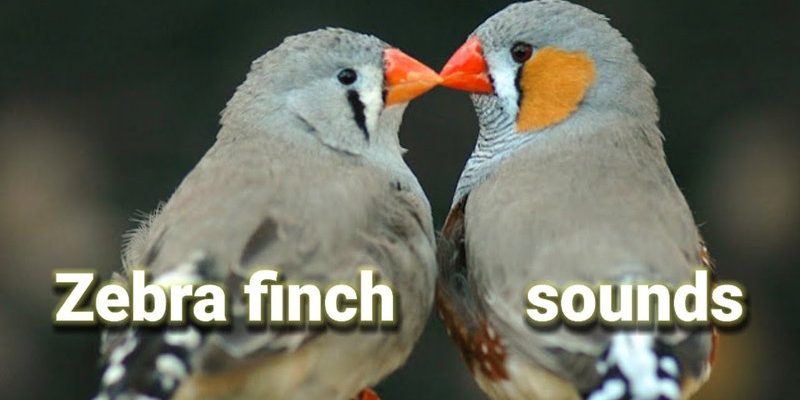
Zebra finches are fascinating creatures not only because of their striking appearance but also because of their complex communication methods. As you sip your coffee, imagine these birds flitting about, their tiny voices filling the air. Let’s dive into the world of zebra finch vocalizations and explore what each sound means.
The Basics of Zebra Finch Communication
Zebra finches primarily use vocalizations to communicate with each other. Each sound serves a special purpose, often related to social interactions, mating rituals, or territorial boundaries. Just as humans use different tones for different conversations, these tiny birds have a diverse repertoire of sounds, each with its unique meaning.
When you think about how we greet friends or call out to someone across the street, zebra finches do something similar. They have various calls, including contact calls that help them stay connected while foraging. When they’re apart, you might hear a gentle chirp or a higher-pitched whistle, letting others know where they are.
Understanding these vocalizations is crucial for anyone who keeps zebra finches as pets. Not only does it help you appreciate their behavior, but it also shows you what they might need—whether it’s companionship, food, or attention.
Types of Vocalizations
Zebra finches have several recognizable vocalizations, and breaking them down can help uncover their meanings. Here are the main types you’ll encounter:
- Whistles: Often used during courtship, whistling is a way for males to attract females. Think of it as a musical serenade, showcasing their fitness.
- Chirps: These sharp, quick sounds are often used as contact calls. When they chirp, they’re saying, “Hey, I’m here!”
- Trills: A sequence of sounds that can vary in pitch and length, trills are often part of a longer song and can express excitement or alertness.
- Alarm Calls: These are sharp and loud, used to warn other finches about potential threats, much like a dog barking at an intruder.
Each vocalization plays a vital role in the social structure of their groups. By paying attention, you can decode what your finches are saying to each other.
The Role of Song in Mating
Song plays a critical role in the mating rituals of zebra finches. Males are known for their elaborate singing, especially during the breeding season. This song is not random; it’s a display of their fitness and genetic quality. Think of it as a performance where only the best singers attract a mate.
When a male zebra finch begins to sing, he often does so in front of a female, showcasing his vocal talents. If she responds positively, it can lead to courtship behavior, which includes mutual preening and feeding. Here’s the thing: the richness and complexity of the song can indicate the male’s health and vigor, making it easier for females to choose a suitable mate.
It’s quite interesting how zebra finches learn their songs, often mimicking others in their environment. Young males listen to their fathers and peers, picking up on subtle variations. So, if you have two groups of finches, you may notice distinct differences in their songs, much like regional accents in humans.
Social Interactions and Calls
Beyond mating, zebra finches use calls to navigate their social structures. These tiny birds live in flocks, which means communication is key. The contact calls serve not just to keep members in touch but to maintain the cohesion of their groups. Imagine a team huddle where everyone checks in before breaking off into their roles.
During feeding times, you might hear more chirping and soft calls as they keep tabs on each other. If one bird finds food, it will often call others over, a bit like announcing, “There’s pizza over here!” This behavior helps them thrive in their environment, ensuring everyone gets their share.
Interestingly, these calls can vary from flock to flock, reflecting local customs. Just as different cultures have unique languages or dialects, zebra finch populations develop their own distinct sounds, making studying them even more fascinating.
Alarm Calls and Predator Warnings
When danger is near, zebra finches switch from their usual cheerful chatter to urgent alarm calls. These sharp, quick sounds serve as a warning to alert the flock about predators, much like a fire alarm in our homes.
These alarm calls can convey different levels of urgency. For instance, a quick series of short chirps might indicate a bird of prey nearby, while a single sharp call may simply signal a nearby cat. The response is immediate—finches will often freeze, hide, or cluster together to avoid detection.
This communication is essential for survival. The flock mentality of zebra finches means that when one bird spots danger and cries out, the entire group benefits. They rely on each other for safety, and these alarm calls ensure that they stay alert.
Why Understanding Vocalizations Matters
For those who keep zebra finches as pets, understanding their vocalizations can enrich the experience significantly. By recognizing what different sounds mean, you can better cater to their needs and enhance their overall well-being.
Listening for changes in their vocal patterns can also help identify potential problems. If your finches suddenly become quiet or stop singing, it might indicate stress or health issues, prompting you to investigate further.
Beyond just being beautiful pets, these birds are social beings that thrive on interaction and communication. Being able to interpret their vocalizations can strengthen your bond and help you provide a nurturing environment.
Zebra finches are more than just charming little pets; they are complex communicators with a rich tapestry of vocalizations. Understanding their songs, calls, and trills not only helps you connect with these birds but also enhances your appreciation for their social structures and behaviors.
Next time you’re near a zebra finch, take a moment to listen. Pay attention to the subtle differences in their sounds and what they might be saying. You’ll find that there’s a lot happening behind those tiny beaks, turning your ordinary day into an extraordinary exploration of avian communication. So, embrace the symphony of zebra finch vocalizations and let their chatter brighten your home!

